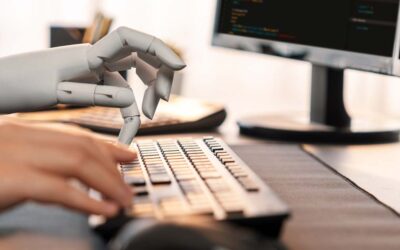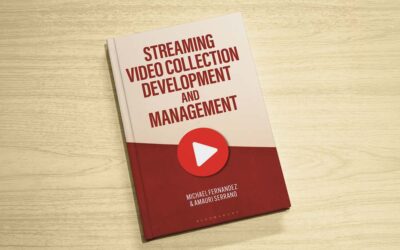Interview with the Author-Editor: Audra Eagle Yun on Archival Accessioning
Lauren Hays
Audra Eagle Yun is the author-editor of Archival Accessioning, which was published by SAA in 2021. My interview with her is below.
Please introduce yourself to our readers.
My name is Audra Eagle Yun and I’m the author-editor of Archival Accessioning. I am the head of special collections and archives and university archivist at the University of California, Irvine, where I have the privilege of providing leadership and vision [https://special.lib.uci.edu/about-us] for a team of nine librarians and staff. My job includes oversight and administration of strategic planning, grants, policies and procedures, fiscal matters, collection development, archival collection management, technical services, user-centered research and instruction services, and sustaining community-centered archives partnerships. My professional background is a hybrid of archival technical services and community archives work, with an emphasis on feminist, inclusive approaches to collaboration and teamwork.
Briefly summarize Archival Accessioning.
This book aims to provide some guiding principles, an initial set of best practices, and concrete exercises from the perspective of experts who have experience managing a variety of complex issues within archival accessioning practice. I set out to put together a guide that would help empower archivists to establish and maintain archival accessioning programs.
Why did you decide to edit this book?
Recently I was asked to reflect on how my background and training led me to archival accessioning. In my plenary remarks for the Society of California Archivists last year, I spoke about how I have long been interested in the “complexities of provenance, custody, and access in archives.” When I first started doing archival processing, I found myself drawn to the notion of the collection file, the internal documentation tracing provenance, acquisition, and accessioning – basically, the story of custody. This information is almost always kept away from the public, but it tells us who had the authority (the power) to select, acquire, and prioritize what would be kept, remembered, and shared. This all relates to the work we do as archivists to gain some level of intellectual and physical control over archival materials, as well as a shift in our core competencies toward ethical, person-centered technical work.
I spoke a bit about this in my interview with SAA, but I have many people to thank for their mentorship and encouragement for me to pursue research and publication about archival accessioning, including Michelle Light and Mary Caldera. In 2013, I put together a panel at SAA called “Accessions Confessions,” with the goal to consider archival accessioning in the post-MPLP [see: http://www.archivists.org/prof-education/pre-readings/IMPLP/AA68.2.MeissnerGreene.pdf] era, including setting the stage for “an exploration of best practices for accessioning.” In 2016, I was approached by SAA (with thanks to Mary, who remembered my panel) about putting forward a prospectus for the first-ever monograph dedicated to archival accessioning in the United States. It took several years from prospectus to publication, but ultimately I wanted to push forward with the book to legitimize and codify archival accessioning as its own field of study and practice, worthy of research and standardization.
Who is the audience for the book?
Archival Accessioning is meant for archival practitioners and students in a variety of institutional contexts who want to understand how accessioning practice has evolved and become elevated as a core archival function; build an archival accessioning program for future and legacy accruals; and/or read firsthand perspectives on more complex issues to improve their everyday accessioning work.
How will the audience benefit from the content?
I come from a mid-sized academic archives, but designed this book to explore as many areas of practice as possible: manuscripts and personal papers; institutional records; government archives; audiovisual and legacy media archives; and born-digital archives are covered by a cadre of specialists who talk through accessioning from their area of expertise. Whether or not you have created an accession record, accessioning practice has impacted you. Many of us lack the authority to make decisions about acquisitions and archival appraisal, but my goal is that readers will be prepared to have conversations with resource allocators, managers, and other leaders to pursue development of or improvements to an accessioning program. When archival accessioning is understood and supported by a team (no matter how small), we can expect collection stewardship to be more ethical, transparent, and inclusive.
How do you see the audience using the book?
I hope this will become a well-worn (or digitally bookmarked!) work for archival practitioners to reference for advocacy, communication, and planning. Accessioning is the first (and too often the last and only) time the donor, selector, and archivist as stakeholders can come together to answer the question: what is this stuff? How should we describe it, preserve it, and make it available?
Of course, I hope the book can continue to be a resource for the forthcoming best practices for archival accessioning, which is being led by the National Best Practices for Archival Accessioning Working Group and funded by the IMLS. These principles and practices are evolving and require continual engagement and intervention from those doing the work.
What are two things you hope all readers take away?
First, that archival accessioning is at the heart of holistic, extensible collection management – you *can* create your own archival accessioning program – it is possible! Second, archival accessioning encompasses many sub-topics that warrant further inquiry – the decision to collect is political, as is the work of acquiring, describing, and disseminating information about what has been collected. Accessioning is very much about power, and it’s time for us to know, define, and critique it.
Lauren Hays
Dr. Lauren Hays is an Assistant Professor of Instructional Technology at the University of Central Missouri, and a frequent presenter and interviewer on topics related to libraries and librarianship. Please read Lauren’s other posts relevant to special librarians. Take a look at Lucidea’s powerful integrated library systems, SydneyEnterprise, and GeniePlus, used daily by innovative special librarians in libraries of all types, sizes and budgets.
Never miss another post. Subscribe today!
Similar Posts
Growing Your Leadership Skills: 7 Tips for Special Librarians
Great library leaders aren’t born—they’re made through learning self-reflection and practice. Here are seven strategies to help you grow and lead with impact.
Keeping Up with Copyright and Generative AI: What Special Librarians Need to Know
As generative AI becomes more prevalent copyright law is evolving to address its impact. A new report from the U.S. Copyright Office provides guidance on what is (and isn’t) copyrightable.
Understanding Shadow AI: Risks Costs and Governance
AI can enhance search discovery and efficiency but unsanctioned adoption—known as “shadow AI”—can lead to budget overruns and compliance risks. Here’s how to evaluate AI pricing models and build a governance strategy that balances innovation with cost control.
Interview with an Author: Fernandez on Streaming Video Collection Development
As demand for streaming video in libraries grows so do the challenges of managing access budgets and licensing. Co-author Michael Fernandez shares key insights from his book “Streaming Video Collection Development and Management”.






Leave a Comment
Comments are reviewed and must adhere to our comments policy.
0 Comments